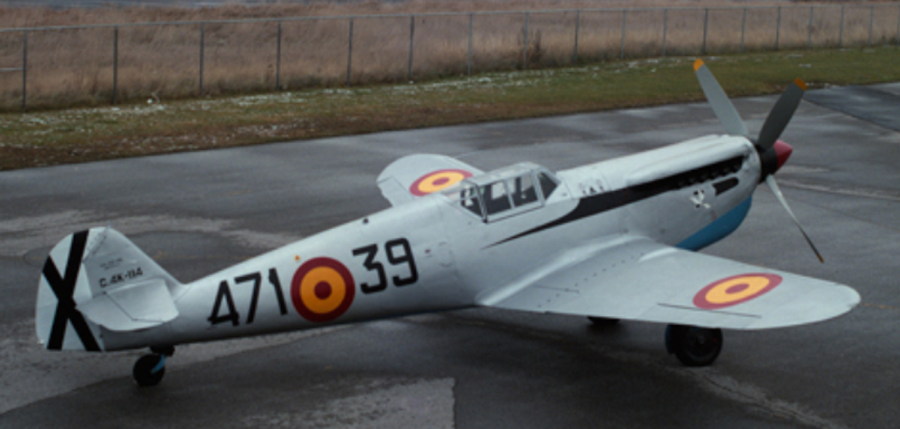 Museum
Museum  |
Bomber Command
|
Aircrew Chronicles
|
Aircrew Losses
|
Nose Art
|
BCATP
|
Lancaster
|
Media
|
Bomber Command
|
Aircrew Chronicles
|
Aircrew Losses
|
Nose Art
|
BCATP
|
Lancaster
|
Media
 Museum
Museum  |
Bomber Command
|
Aircrew Chronicles
|
Aircrew Losses
|
Nose Art
|
BCATP
|
Lancaster
|
Media
|
Bomber Command
|
Aircrew Chronicles
|
Aircrew Losses
|
Nose Art
|
BCATP
|
Lancaster
|
Media
Museum Collections
Aircraft in the Collection

The Messerschmitt Bf 109 was designed in the mid-1930's. Referred to as the Me 109 by Allied pilots and aircrew, it was one of the first truly modern fighters of its era. The Bf 109 featured all-metal construction, a closed canopy, retractable undercarriage, and a liquid-cooled, inverted V-12 engine. It is the most-produced fighter aircraft in history with almost 35,000 of all versions being built.
The Me 109 was the 'backbone, of the Luftwaffe's fighter force from the Spanish Civil War to the end of the Second World War. It fulfilled multiple roles including bomber escort, fighter-bomber, day/night fighter, and ground-attack. Only when the Luftwaffe fighter pilots met the Spitfire in combat did they find an aircraft that could match their Bf 109s.
Most of the over 12,000 aircraft lost by Bomber Command were shot down by the Luftwaffe fighters. As the enemy's leading day and night fighter during the early years of the war, the Me 109 had considerable success against Bomber Command aircraft.
During late 1943 and early 1944, Bf 109’s played a major role in the enemy's highly-successful 'Wild Boar' operations in which Luftwaffe single-engined aircraft were used as night-fighters to attack Bomber Command aircraft. Visual contact was made by the fighter pilots aided by light from the burning target, target markers, flares dropped by other Luftwaffe aircraft, and searchlights.
The museum's Messerschmitt Bf 109 is a Spanish-built Hispano HA-1112-M1L 'Buchón' (c/n 164) -a post-war variant of the Bf 109G-2 built under a manufacturing license with Messerschmitt. As the German-built Daimler-Benz V-12 engines were no longer available, the Buchóns were fitted with Rolls-Royce Merlin engines. They were armed with two 20 mm cannon and 80 mm rockets.
The museum's aircraft served with the 7th Fighter Bomber Wing of the Spanish Air Force. Producers of the 1960s British film 'Battle of Britain' acquired the aircraft and used parts of it in aircraft featured in the film.
Canada's Department of Defence Production purchased the Buchón from Spitfire Productions Ltd. of London, England, for the Canadian War Museum in 1967. Following restoration in 1986, the aircraft was finished in its original Spanish Air Force markings. Buchón #164 was acquired by the museum in 2022.
The installation of the Merlin V-12 engine makes the nose contours of the HA-1112 quite different from those of the original Messerschmitt Bf 109G, hence its nickname "Buchón" (pouter pigeon).

|
Engine Dimensions Weights Performance Armament |
Make: Wingspan: Length: Height: Loaded: Empty: Max Spped: Cruising Speed: Climb Rate: Range: Ceiling: |
Daimler-Benz V-12; 1455 hp 32.5' (9.93 m) 29.5' (8.95 m) 8.2' (2.6 m) 6945 lb (3150 kg) 5893 lb (2673 kg) 388 mph (624 km/h) 365 mph (590 km/h) 3345 ft/m (1020 m/min) 528 miles (850 km) 39,375' (12,000 m) Single 30 mm cannon Two 13 mm machine guns |